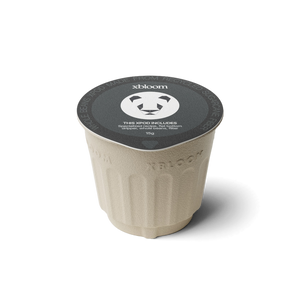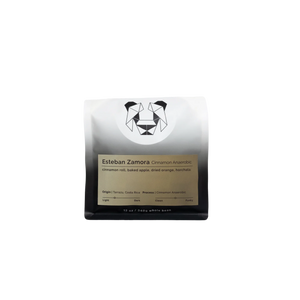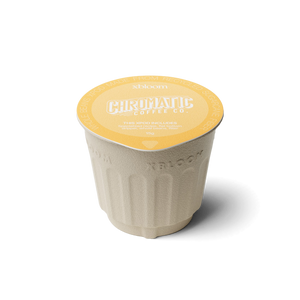Like the world of wine, sometimes understanding how to taste coffee can seem a little intimidating for a beginner. Flavor notes on the back of your fresh packet of coffee beans are sometimes obvious and easy to understand. But when an expert team is behind the description, it can be hard to pick up on the subtleties they identified when you take a sip.
As coffee lovers, we want everyone to get the most out of their coffee and gain a deeper appreciation of our favorite drink! And we believe that with the proper guidance, everyone can enjoy the experience of tasting coffee, which is why we are here to help simplify the process.
With our list of essential elements to look out for, the art of coffee tasting becomes a lot easier and more rewarding. If you’re curious to learn more, get your tastebuds at the ready and let’s dive in!
Flavor and Aroma
Coffee can have complex flavor profiles that depend on a range of factors, including where it was grown, the local weather and altitude, how it has been processed, roasted and brewed, its variety and more! While expert coffee tasters might uncover a world of flavors and aromas that go unnoticed for you, tastes and smells are highly personal concepts. You might not pick up on that hint of tobacco, but you’re likely to find that a sip evokes long-forgotten memories of experiences or places if you really concentrate.
What do the aroma and flavors remind you of? Are you able to pick up blackberry, dark chocolate or vanilla notes? Does it have a savory or sweet and sugary profile? Does it remind you of nuts or any spices? Having a coffee flavor chart to hand can help you focus on all the different elements that could add to your coffee's overall flavor.
If you’re just starting on your coffee tasting journey, you might struggle to put a name to what you’re tasting or smelling. But remember! Practice makes perfect. And the more coffee you taste and enjoy, the more likely it is that you’re going to pick up more and more details. Comparing two or more different coffees helps us genuinely notice the differences between beans.
Sweetness
Related to flavor and aroma, sweetness will impact your overall perception of the taste and smell of your coffee. We don’t mean the artificial sugar tones of flavors of a caramel latte! But the natural sweetness that certain beans bring to the table. You might be reminded of honey, maple syrup or brown sugar. Or maybe the coffee you’re tasting lacks sweetness altogether.
Acidity
For many, acidity has negative connotations! And the idea of an acidic cup of coffee is probably the opposite of what you want to drink. But don’t imagine the face-distorting sensation of biting into a lemon! When it comes to good coffee, acidity is a positive thing, and it’s usually a lot more understated than what you might have in mind. Levels can vary dramatically according to your coffee beans and your method to brew them. Sometimes the acidity might remind you of citrus fruit, but other times it’s likely to be more subtle, like the tang of a yogurt!
This shouldn’t get muddled with bitterness, which is another quality to look out for as you learn how to taste coffee. Burnt coffee might bring an unpleasant bitterness to your cuppa that gives it an acrid taste, but the right level of bitterness is very common in certain brews, for example, an espresso.
Body
How does the coffee feel on your tongue? This might sound strange, but depending on the coffee you’re drinking, the body can change dramatically. If you drink wine or beer, the concept of a full-bodied glass might be familiar and a helpful reference. Or different types of milk can serve as inspiration if you think about the lightness of a glass of skim milk compared to full-fat. In terms of body descriptors, people tend to talk about coffee as being light, medium or heavy.
How to Taste Coffee? The Coffee Cupping Process.
Now that you have a better idea of the elements to look out for when coffee tasting (and you’re armed with a coffee flavor chart to help with the process), you might be eager to get started. So we wanted to talk a little bit about coffee cupping, a tried and tested technique that world experts and amateurs alike use to test out the coffee.
The process isn't so different if you’ve been to a wine tasting. But instead of lined-up glasses, imagine a table full of coffee cups. According to the coffee cupping protocol, you just pour hot water over the freshly roasted and ground beans that sit waiting in each cup. You mix the infusion three to five minutes later before waiting a little longer to try the coffee. Not only will this help ensure you don’t burn your mouth! But the extra wait time will allow even more flavor to emerge.
Using two spoons, avoiding contamination of the coffee as only one goes into your mouth, the coffee tasting process can begin! And it’s good to know that it’s totally acceptable for you to spit out the coffee after you’ve tasted it. After all, some professionals try hundreds of different varieties a day.
With that said, you’re ready to get tasting! Attending a local event can be a great way to kick off your coffee tasting experience as a beginner. They’ll take you through the process, teach you the technique and offer insights into the flavors and aromas you might be able to pick up on. But with the xBloom barista-approved recipes and flavor notes from our expert tasters in the marketplace, you can also create that learning experience in the comfort of your own home!







![El Salvador Cup of Excellence #1 Honey Pacamara [Score: 92.00]](http://xbloom.com/cdn/shop/files/bean_bean.png?v=1761870432&width=300)



















